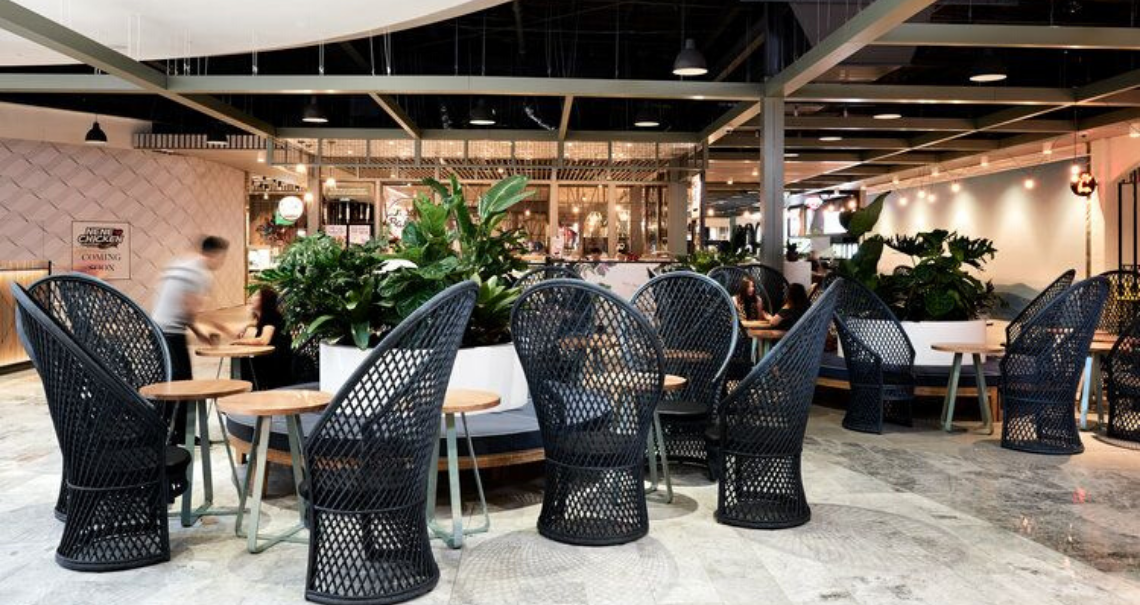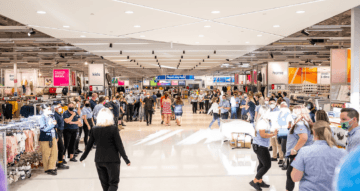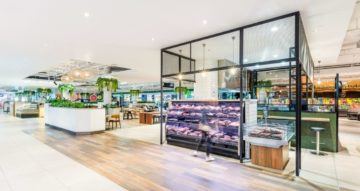While most Australian retailers likely shudder at the thought of the international online shopping tsunami hitting our shores, the mass market food and beverage retailers may have the likes of Amazon to thank for their soaring popularity in retail centres, according to DMA Partners’ Associate Angus Jarmer.
A former architect, Angus said, “Major retail centre owners, such as Westfield and QIC, have long recognised the pulling power of food and beverage operators but these days they are taking it to an entirely new level.
“Rather than being just an add-on to the shopping offer, restaurants, bars and cafes are now a lead commercial strategy for centre owners and operators.”
He said, “It’s no secret that foot traffic is the key to revenue within retail centres and Australia’s growing love of online shopping has had a huge impact on this traffic and actual spending at bricks and mortar outlets.
“Centre owners and operators have always looked to food and beverage to help generate visitation but never before have we seen the level of spend or design-focus on the restaurant precinct that we are right now.
“You only have to look at the newly opened Westfield Chermside restaurant precinct fronting Gympie Road,” he said.
“It ticks all of the boxes – street appeal, accessibility, contemporary design, broad tenancy mix and even views, albeit man-made through good architectural design.
“Nevermind the shops, this restaurant precinct is a destination in its own right and arguably would rival the major department stores for crowd pulling power.
“But make no mistake; this did not occur by accident. Westfield undoubtedly deployed a well-constructed, evidence-based commercial approach to the feasibility assessment for this major redevelopment,” Angus said.
“It’s a strategy that DMA advocates strongly for on projects of all types. A commercially-led feasibility assessment at the outset can mean the difference between a project that delivers development profit and long term investment value and a project which was a great idea but a lost financial opportunity.”
He said careful consideration of financial fundamentals and competitive market factors, including potential tenancy mix, at the outset could deliver hundreds of thousands if not millions of dollars in additional value over the life of the asset.
Angus said, “A well-designed and managed food and beverage precinct does absolutely have the ability to substantially increase visitation to a centre.
“Most of our clients have identified the strong trend towards providing a substantial food and beverage offer in retail centres and the DMA team is currently working hard to leverage the food and beverage opportunity within a number of assets.
“In the broader context of a shopping centre, food and beverage tenants not only drive visitation to a centre, they will also contribute to an increase in dwell times of these visitors at the centre. In most cases, the more time a customer spends at a centre the greater the spend.”
He said everything about contemporary food precincts played to the omnipresent lifestyle ambitions of today’s consumer.
“The more we enjoy the experience, the more we will seek it and therein lies the pulling power of the retail restaurant precinct.”
Angus said “Without a doubt the food industry and their retail tenancy masters need to keep a very close eye on customer sentiment and behaviours because just as swiftly as those feet arrived they could disappear again if their desires and demands for service, quality and experience aren’t met.
“However, given the number of high quality, market savvy operators in the mix right now, I can’t see the Australian public falling out of love with the shopping centre restaurant precinct any time soon,” Angus said.




